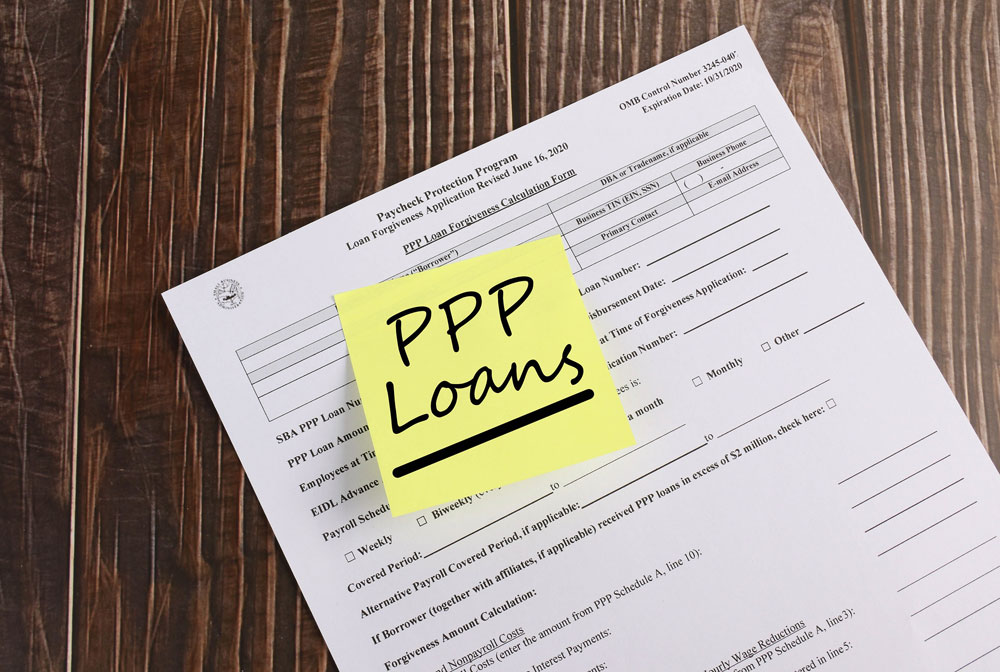
July 1, 2020; Journal of Accountancy, New York Times, and CNBC
On Tuesday night, the US Senate passed by unanimous consent a five-week extension of the Paycheck Protection Program (PPP). Yesterday, the House followed suit and the bill is expected to soon be signed into law. The bill extends the deadline date for small businesses and nonprofits to apply for PPP funding from June 30th to August 8th. To date, the US Small Business Administration has approved nearly 4.9 million forgivable loans (de facto grants) for a total of more than $520 billion.
Jeff Drew in the Journal of Accountancy offers a nice summary of the program. The forgivable loans, he notes, were designed to “support organizations facing economic hardships created by the coronavirus pandemic and assist them in continuing to pay employee salaries.” The PPP monies, he adds, “were made available to small businesses that were in operation on February 15 with 500 or fewer employees, including not-for-profits.” A key rule: the maximum request you can make is limited to the cost of ten weeks’ payroll.
As NPQ readers know well, the first $349 billion of the PPP program was distributed within two weeks in a mad scramble that is sure to become legendary for its multiple snafus. Then a second round was approved for an additional $310 billion. Many thought this money too would be used up quickly, but it wasn’t.
In the New York Times, Stacy Cowley explains that there were two main reasons why program demand stalled. The first is that each business can get only one bite at the apple. There are about six million businesses and nonprofits with employees that qualified for the program; if 4.9 million got funded, that’s over eight in ten eligible firms. But there was another reason too: the program’s shifting requirements “dissuaded some qualified borrowers, who feared they would be unable to get their loan forgiven.”
A month ago, the requirements were loosened—allowing money to be spent over 24 weeks instead of eight weeks, and allowing payroll to just cover 60 percent of the loan to qualify for forgiveness instead of 75 percent—but by then most had already spent the money based on the previous requirements. The fact that businesses and nonprofits had prioritized payroll, as the initial law demanded, certainly provided a needed boost to employment, but it was often not the most effective use of funds.
It’s worth noting that less than $20 billion has been distributed since the Paycheck Protection Program Flexibility Act was passed in early June. Given that, the five-week extension for the $130 billion or so outstanding is largely a feel-good measure and it is unlikely that much of that money will be spent in the coming weeks.
Sign up for our free newsletters
Subscribe to NPQ's newsletters to have our top stories delivered directly to your inbox.
By signing up, you agree to our privacy policy and terms of use, and to receive messages from NPQ and our partners.
As NPQ noted in May, “Part of the challenge with the design of the PPP was that it sought to achieve two, often contradictory, purposes at once: preserve employment, and preserve nonprofits and for-profit businesses.”
Cowley provides a case study of Tracy Singleton, a Minneapolis restaurant owner, that illustrates how these contradictions can play out. Due to the pandemic, Singleton closed her farm-to-table restaurant, the Birchwood Cafe, in mid-March and laid off all but a handful of her 62 workers. Then, she was fortunate enough to get a PPP forgivable loan in the first round. She received her $382,200 loan in early April, a week after the program began, and soon spent it all—even though she won’t be fully reopening any time soon.” This meant going back from a skeleton crew of eight to 48 people although there was not a lot of work for the 40 rehired people to do. Once the eight weeks were up, employment contracted back to 20.
“We looked at this as a bridge,” Singleton explains. “Then our time was up, and there’s no solid ground to stand on yet.”
Advocates of the PPP program, such as senators Chris Coons (D-DE) and Marco Rubio (R-FL), agree that a second round of PPP support is needed to keep businesses and nonprofits afloat, now that nearly everyone understands the economic depression will last a lot longer than 10 weeks (which was a notion that was always a bit fanciful). However, what a “Phase 2” PPP design would look like remains unclear.
More broadly, although discussed less, it would be worth finding ways to boost employment more directly. We’ve noted before how other countries have avoided mass unemployment nearly entirely by subsidizing payroll directly throughout the pandemic; bills to do this in the US have languished. There is also the possibility of mobilizing the federal government to act as an employer of last resort.
Clearly, amid the current depressed economy, the US needs both an employment strategy and a nonprofit and business preservation strategy. Sadly, it has neither.—Steve Dubb













